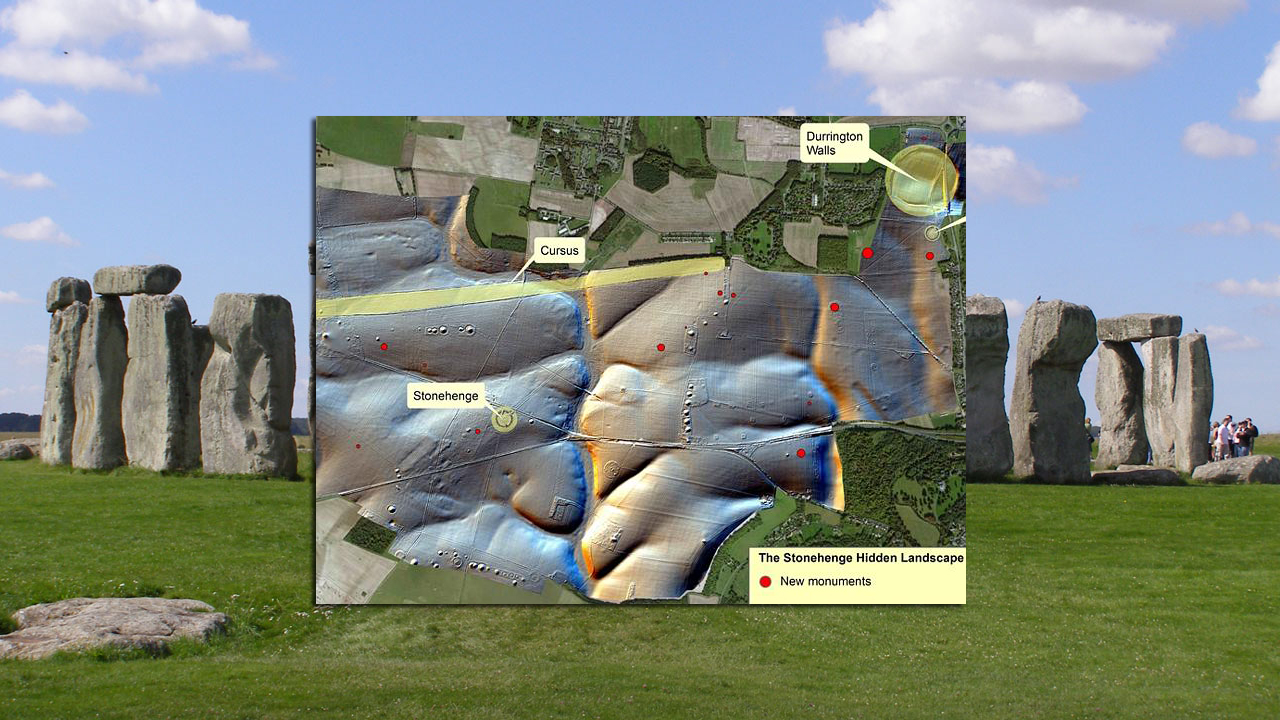Archeologists recently found out that Stonehenge was once a complete circle, destroying long held beliefs about the enigmatically placed stones. Now, there has been an even bigger discovery. Using high tech magnetometers — “advanced metal detectors — ground-penetrating radar, electromagnetic sensors and three-dimensional laser scanners,” scientists were able to peek beneath the ground surrounding the site for the first time. They found that Stonehenge, long thought to be an isolated monument, was actually surrounded by two miles of other structures, including a kind of “Super Stonehenge,” which is nearly a mile in circumference and was composed of over 60 stones.
 (Photo: Channel 4 via ArtNet)
(Photo: Channel 4 via ArtNet)“This project has revealed that the area around Stonehenge is teeming with previously unseen archaeology and that the application of new technology can transform how archaeologists and the wider public understand one of the best-studied landscapes on Earth,” said Gaffney.
“New monuments have been revealed, as well as new types of monument that have previously never been seen by archaeologists.”



